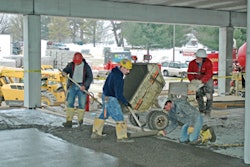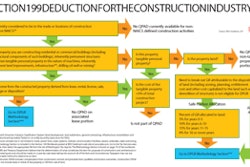Is your glass half empty or half full? With the rising cost of fuel and material, asphalt cement binder in particular, the challenges the industry currently faces may lead you to believe your glass is half empty. If you embrace the current situation as overwhelming, it will become your self-fulfilling prophecy. But consider, for a moment, the challenges you and every other asphalt contractor face as opportunities. If you do, you'll be in a much better position to focus on the solutions required to win contracts and profitably execute those contracts.
You will need to operate your business with a realization of higher material costs and plan accordingly.
Here's the good news. The United States will continue to maintain the 2.3 million miles of paved roads that are needed to support the economic vitality of this country. And with over 90 percent of those roads constructed of asphalt, the job can't get done without contractors and asphalt producers. And with federal funding financing 40 to 45 percent of the highway construction required to maintain the road infrastructure we have in place, you can be sure the government is not going to abandon the investment it has made.
According to the National Asphalt Pavement Association's "Hot Mix Asphalt — Visions 2005 and Beyond," there are 160,000 miles of major roads that are rated unacceptable for ride quality, and those roads need replacing or resurfacing. That translates into a current backlog of highway and bridge work worth $325 billion. The population in this country is expected to grow by 30 million every 10 years and vehicle miles traveled will increase, with truck traffic doubling by 2020. And taxpayers will continue to demand smoother and safer pavements.
So if material costs continue to rise, how will the HMA industry respond? The way it has always responded by continuing to deliver a better and more cost-efficient solution to the demands placed on this country's road infrastructure. Road agencies don't want to reduce the number of lane miles targeted for improvements because of higher material costs. Expect to see more agencies transferring responsibility to contractors for pavement quality and delivery. Expect to see more warranty projects awarded to contractors.
Also, expect to see increased levels of reclaimed asphalt pavement in mix designs specified for agency projects. Expect to see more perpetual pavements constructed, which will help to reduce the material required to maintain a road down the road (pardon the pun). Expect to see more mix designs, like Stone Matrix Asphalt, that reduce the amount of asphalt cement binder required to hold the mix together. Expect to see an increased interest in warm mix designs that require less energy to produce. And expect to see continued improvements in the technology used to produce and place economical quality pavements.
With the work that needs to be done to maintain a quality road infrastructure, having the right "full-glass" mindset will go a long way to make sure you're part of the solution.
Greg Udelhofen, Editor



















